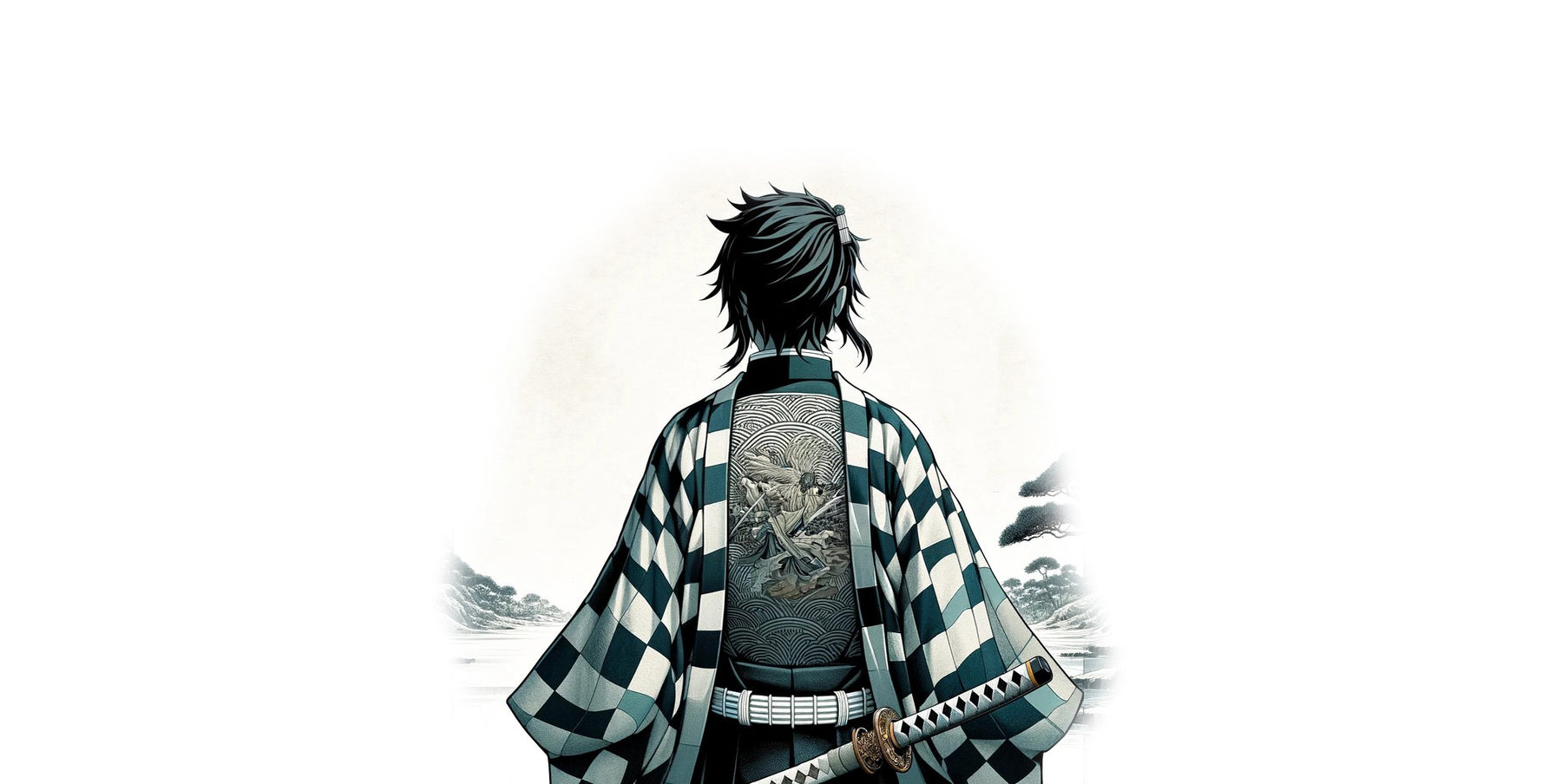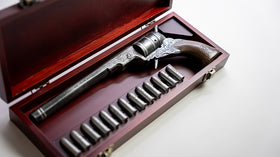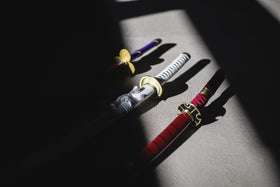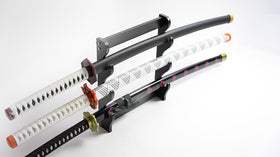
Unveiling the Mystique of Nichirin Swords in Demon Slayer: Colors, Meanings, and Wielders
In the enthralling universe of "Demon Slayer," Nichirin blades stand out as pivotal instruments in the battle against demons. These unique swords, forged from a special ore that absorbs sunlight, are the primary weapons of the Demon Slayer Corps. Each blade is distinct, not just in its craftsmanship but also in the color it takes when first drawn by its owner. This color change is not merely for aesthetics; it signifies the blade's nature and the wielder's fighting style and abilities. In this post, we delve into the lore of Nichirin blades, exploring the significance of their colors and highlighting the characters who wield them.
The Significance of Nichirin Blade Colors
Nichirin blades, also known as "Sunlight Swords," reflect the wielder's personality and the type of Breath Style they use. Here are some of the most notable colors and their meanings:
-
Blue: Often associated with the Water Breathing users, blue blades symbolize tranquility, strength, and flexibility. Giyu Tomioka, the Water Hashira, is a prime example of a blue Nichirin blade wielder, epitomizing calm and resilience in the face of adversity.
-
Green: Green blades are rare and typically signify the wielder's connection to wind. Sanemi Shinazugawa, the Wind Hashira, wields a green Nichirin blade, embodying the wild and unpredictable nature of wind.
-
Yellow: Yellow blades are indicative of Thunder Breathing users, representing speed and precision. Zenitsu Agatsuma, with his extraordinary speed and lightning-fast attacks, wields a yellow Nichirin blade.
-
Pink: A unique color among Nichirin blades, pink is associated with Love Breathing techniques. Mitsuri Kanroji, the Love Hashira, uses a pink blade, reflecting her passionate and loving nature.
-
Red: Red blades are extremely rare and signify a powerful user with the potential to unlock new forms of breathing techniques. This is the colour of Kyojuro Rengoku's nichirin sword. The design of Rengoku's red Nichirin sword, with its flame-like patterns and colors, symbolizes his mastery over fire and his role as a protector of humanity against demons. As a Hashira, Kyojuro Rengoku is a master of the Flame Breathing style, a technique that is both powerful and visually striking.
-
Black: The most enigmatic of all colors, black Nichirin blades are considered omens of bad luck, as their users tend to have short lifespans. Tanjiro initially wields a black blade, which puzzles many due to the rarity and mystery surrounding this color.
Characters and Their Nichirin Blades
-
Tanjiro Kamado: Starts with a black Nichirin blade, symbolizing mystery and potential, and later wields a red blade, representing his growth and fiery determination.
-
Giyu Tomioka: Wields a blue blade, embodying his calm, resilient nature as the Water Hashira.
-
Zenitsu Agatsuma: Uses a yellow blade, reflecting his speed and precision as a Thunder Breathing user.
-
Sanemi Shinazugawa: His green Nichirin blade signifies his wild and unpredictable nature as the Wind Hashira.
-
Mitsuri Kanroji: The pink blade of Mitsuri, the Love Hashira, represents her passionate and loving nature.
-
Kyojuro Rengoku: Uses a red blade, reflecting the intensity of his character as the Flame Hashira
-
Tengen Uzui: The amber dual chained blades of Tengen, the Sound Hashira, reflect his unconventional personality.
-
Inosuke Hashibira: The indigo-gray jagged nichirin swords of Inosuke, look like a predator's teeth, fitting his aptly named beast breathing technique.
-
Muichiro Tokito: The Mist Hashira uses a white Nichirin blade, reflecting his light and airy personality.
-
Shinobu Kocho: Uses a unique lavender-blue Nichirin sword, with a needle-like tip as the Insect Hashira, designed to deliver poison upon piercing and resembling a butterfly.
-
Yoriichi Tsugikuni: Uses a red-black Nichirin blade, as the most powerful Demon Slayer to have ever existed and the inventor of Breathing Techniques. His blade changes from black to red during combat.
-
Kanao Tsuyuri: Uses a light pink Nichirin sword, reflecting her innocent childlike appearance as the younger adopted sister to Shinobu.
-
Obanai Iguro: Uses a twisted Nichirin blade, similar in appearance to a slithering snake, reflecting his role as the Serpent Hashira.
What is the Rarest Color Nichirin Sword in Demon Slayer?
In the "Demon Slayer" series, the rarest color for a Nichirin blade is black. Black Nichirin blades are exceedingly uncommon and are surrounded by mystery and superstition within the Demon Slayer Corps. The lore of the series suggests that demon slayers who wield black blades have a tendency to die young, which contributes to the ominous aura surrounding these weapons.
Tanjiro Kamado, the protagonist of "Demon Slayer," initially receives a black Nichirin blade. His sword's unusual color puzzles many characters within the series, as black blades are not only rare but also lack a clear association with any specific Breathing Style. This rarity and the lack of historical data on black blade wielders contribute to the intrigue and speculation about Tanjiro's destiny and potential.
Despite the superstitions, Tanjiro continues to defy the odds and proves himself to be a formidable demon slayer, challenging the notion that black blades signify misfortune. His journey seeks to uncover more about the mysteries of the black Nichirin blade and its significance in the battle against demons.
What is the Strongest Nichirin Sword in Demon Slayer?
Determining the "strongest" Nichirin blade in "Demon Slayer" is subjective and depends on various factors, including the wielder's skill, the breathing technique used, and the context of the battle. Nichirin blades are special swords that demon slayers use to fight demons, and their effectiveness is closely tied to the user's ability to harness their breathing technique. Each blade is unique and tailored to the user's specific breathing style, which means that the strength of a Nichirin blade is not solely based on the sword itself but on how well it complements the user's fighting style and abilities.
However, in terms of potential and lore within the series, the Nichirin blade that becomes red, especially when Tanjiro Kamado wields it, holds a significant place. The red Nichirin blade is noted for its ability to prevent the regeneration of demons, making it exceptionally potent against them. This characteristic is tied to the legend of Yoriichi Tsugikuni, who was arguably the strongest demon slayer in the series' history and the original practitioner of the Sun Breathing technique. The color change to red, as seen with Tanjiro's blade during crucial fights, symbolizes a rare and powerful phenomenon that enhances the blade's demon-slaying capabilities.
Moreover, the series hints at the profound potential of Sun Breathing – the first and most powerful breathing technique from which all other techniques are derived. Thus, a Nichirin blade wielded by a master of Sun Breathing, capable of turning red, could be considered among the strongest due to its historical significance, unique properties, and the overarching threat it poses to demons, including the upper ranks of the Twelve Kizuki and Muzan Kibutsuji himself.
The colors of Nichirin blades in "Demon Slayer" are more than mere decoration; they are deeply tied to the characters' identities and their battles against demons. This fascinating aspect of the series adds depth to its lore, making the journey of Tanjiro and his companions even more compelling.
As "Demon Slayer" continues to captivate audiences worldwide, the mystique of Nichirin blades remains a captivating topic for fans and newcomers alike. Whether it's the serene blue of Giyu's Water Breathing or the electrifying yellow of Zenitsu's Thunder Breathing, each color brings with it a story, a style, and a legacy.





Leave a comment